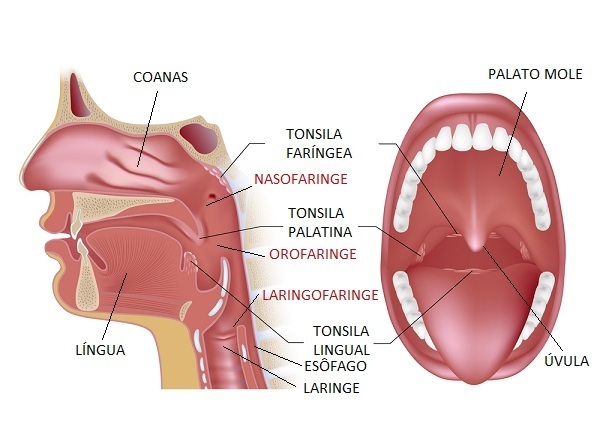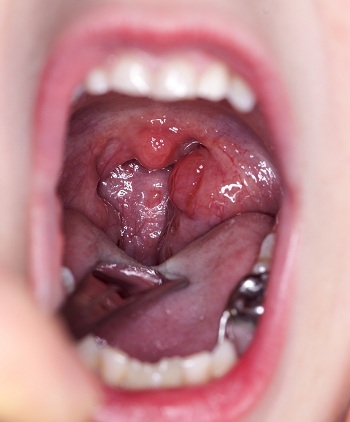The pharynx is an organ that is part of both the respiratory system and the digestive system. It is a membranous muscular channel, which communicates with the nose and mouth, connecting them to the larynx and esophagus.
Anatomy of the Pharynx

The pharynx is a tube, the walls of which are muscular and lined with mucosa. It is located at the height of the throat, in front of cervical vertebrae, fixed at the base of the skull. It can be divided into three regions: oropharynx, nasopharynx and laryngopharynx.
Nasopharynx
The upper part of the pharynx communicates with the nasal cavities, through the choanas, and with the middle ears, through the auditory tube on each side.
Oropharynx
The oropharyngeal region is intermediate between the other regions. It communicates with the opening of the mouth through a region called the isthmus of fauces.
Laryngopharynx
Lower is the laryngopharyngeal region, which communicates with the entrance of the larynx (in the respiratory system) and lower with the opening of the esophagus (in the digestive system).
Occupation
The pharynx has the function of passing inhaled air and ingested food to the other organs of the respiratory and digestive systems, respectively. During the route, air and food are never found, due to mechanisms that block the entrance of each one in the wrong ways.

To prevent food from entering the respiratory tract, during swallowing, the epiglottis closes the communication hole with the larynx. Along with this, the soft palate blocks the upper part of the pharynx and prevents food from entering.
During the digestion process the food goes to the pharynx after being chewed and swallowed. The food bolus formed runs through the pharynx through voluntary contractions and is then taken to the esophagus.
The pharynx receives air from the nasal cavities through the corneas and passes through the larynx, until it reaches the trachea .
What is Pharyngitis?
Pharyngitis is inflammation of the pharynx, which is caused by microorganisms (viruses and bacteria) that enter the airways. Winter is the period that most facilitates infections, due to the dry climate and environments with greater crowds of people.

Symptoms are sore throat, hoarseness, dry throat and difficulty swallowing. However, these symptoms can be confused with other sore throats, such as tonsillitis and laryngitis, which affect these organs near the pharynx.
When the cause of the inflammation is bacterial (most common), the causative agent of the disease is the bacterium Streptococcus pyogenes and treatment is done with antibiotics. If it is viral pharyngitis it is caused by a virus that could be the common flu
In addition to viral and bacterial pharyngitis, the inflamed pharynx can be caused by allergies, low immunity, chronic respiratory infections (asthma and pulmonary emphysema), exposure to pollution and chemical components such as cigarette smoke.
